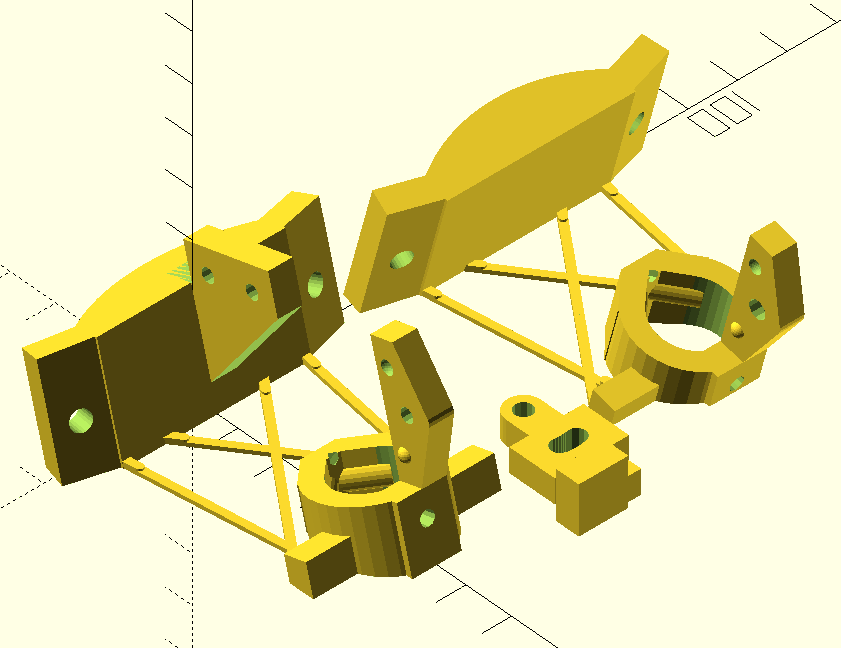I’ve been doing my fair share of plotter work lately and I decided I wanted a pen holder with gentler down-force.
I measured Ryan’s pen holder as having a stiffness of about 1 oz of force for each 0.2 mm of deflection. I had been drawing with a Z height of about -0.5 mm for drawing and +0.5 mm for non-drawing moves. Less downforce is possible with simply less deflection, but then I am subject to inaccuracies in the surface or in how precisely I set the starting Z position.
I really like the flexure concept because it has no sliding parts to create friction or play. Here is what I came up with: https://www.thingiverse.com/thing:3684159
This uses a flexure with thinner springs to reduce the spring constant. The thinnest version has a stiffness of about 0.2 oz of force per 1 mm of deflection. I can pre-load it with about 5 mm of deflection for about 1 oz of force, and even then the downforce changes only a little as the Z height changes. A huge Z error of 0.5 mm is only a 10% change in the force.
I rearranged the geometry to try to maintain as much stiffness as possible in the horizontal direction. And I had to split it into two parts to allow the spindly flexures to print flat.
[attachment file=103159]
I got some new ultra-fine-tip pens that feel like they “want” to be used with a light touch. I’m hoping this keeps them happy.

